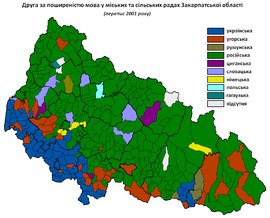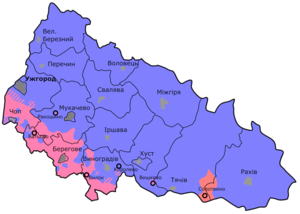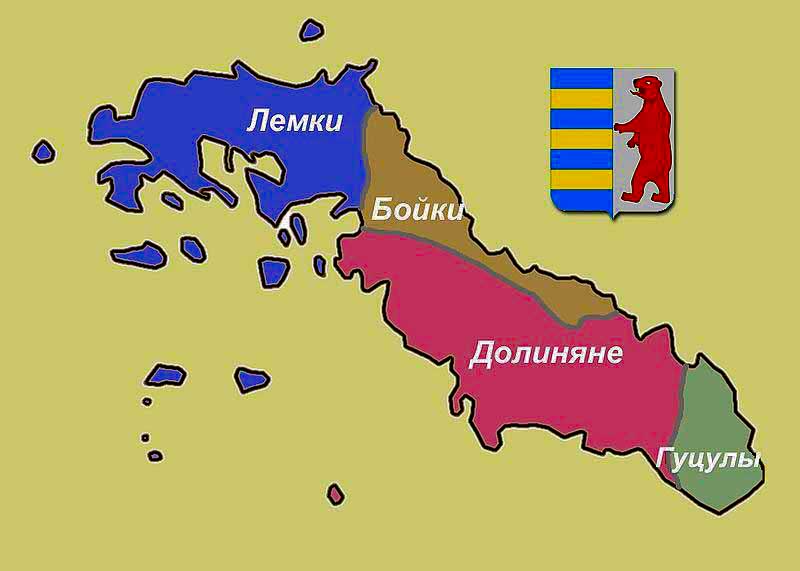Before you go on vacation in Transcarpathia, any tourist should get acquainted with the ethnographic characteristics of its population. In General, the Transcarpathian region is a multi-ethnic region. It is home to a courageous and hard-working people who have created a precious treasure of spiritual and material culture over the course of a complex historical development.
Transcarpathia is the youngest region in Ukraine. It became part of the then Ukrainian SSR only after World War II, namely, on January 22, 1946. the Transcarpathian region is located on the South-Western slopes of the Ukrainian mountains Carpathian and their foothills, as well as in the North-Eastern part of the middle Danube lowland. Transcarpathia has a unique geographical location. Transcarpathian region borders with Lviv (85 km) and Ivano-Frankivsk (180 km) regions, and then only on mountain ranges. At the same time, the state border of Ukraine with four countries – Poland (33 km), Slovakia (98 km), Hungary (135 km) and Romania (190 km) – passes through Transcarpathia. The border runs along mountain ranges and on flat territory, and for a significant segment – along the riverYew tree and its tributaries.

Transcarpathia has long been an important cultural crossroads between East and West. Different peoples and ethnic groups met and mixed here, with different traditions, customs and religions. Since the end of the XI century the gradual incorporation of Transcarpathia into the Hungarians, after that, the process of settling the region has become extremely complex. The formation of Transcarpathia into a separate unique ethnographic zone was influenced by a whole complex of factors: natural-geographical, state-political, religious, economic, ethno-cultural and ethnodemographic. Throughout its historical development, the Transcarpathian ethnographic zone has been constantly shrinking. At the end of the XVIII-beginning ХІХ the total area of Transcarpathia was 22.3 thousand km2, including at home Maramoroskyi,Ugochanskyi, Berezki and Uzhanskythe counties (of a total area of 17.9 thousand km 2) and about 4.4 thousand km of the Ukrainian ethnic territories of the Zemplinsky, Sharish, spish and Abu-Tornyansky comitates. As a result of ethnopolitical processes the territory of Transcarpathia in 1918-1938 was reduced to 15.6 thousand km2.
Today the total area of the region is 12.8 thousand km2. The population of Transcarpathia is 1 million 244 thousand people. (as of 2010). Along with Ukrainians (about 80 %) on the territory of the region live compactly Hungarians, Romanians, Russians, Slovaks and many other nationalities.
Ukrainians. The culture of Ukrainians in Transcarpathia is an integral part of the national Treasury of the Ukrainian people. The peculiarity of historical, economic and cultural development, natural and geographical features, close contacts with other peoples – all this is characteristic of the Ukrainians of Transcarpathia.
An important role in the formation of ethnographic and local features of the folk culture of Ukrainians in Transcarpathia was played by the penetration of migrants from the North of the Carpathians of various ethnographic groups –Hutsuls, firing pin, Lemke.
In TranscarpathiaХІХ –the beginning of the twentieth century are the following ethnographic groups of the Ukrainian population: dolyniany, Lemko, Boyko, Hutsuls.
Dolyniany. Most of the territory of Transcarpathia (9.75 thousand km2)and 200 km2of Ukrainian ethnic territory in Romania along the. Yew tree from m. Sigit to m. Tyachev inhabited by Ukrainians-dolinyane. They live on the plain, in the foothills, middle mountains and partly high mountains of Transcarpathia from the town of Shopurki in the East to the border with Slovakia in the West. The Northern boundary of the watershed dolinian pass the half-oninsky ridge from PGT. Mezhgore in the village of Yavirnyk on In the Russian Federation.In the South, they are bordered by Hungarians who inhabit the outskirts of Transcarpathia, lowlands along the border with Hungary.
Most researchers believe that dolyniany came from southern Ukraine through Moldova and Transylvania, and Transylvania are the descendants of Slavs.
Firing pin. Boykivshchyna occupies the mountain systems of the Central and Western part of the Ukrainian Carpathians. According to modern administrative-territorial division named area covers South-Western districts of Rognedinska and almost all Dolyna district Ivano-Frankivsk region; Skole, Turka, southern strip Stryi, Sambir and most part of Starosambirskyi district, Lviv region, Northern part Intermountain, Velyky Yes all of it Volovetsky districts of Transcarpathia. The Transcarpathian part of Boykivshchyna was inhabited mainly by migrants, fleeing from feudal oppression, fleeing to the mountain hard-to-reach areas. In the South, boiki is bordered by dolynyans, in the southwest by lemki and poles, in the Southeast by Hutsuls, and in the East by the Ukrainians of the naddneprianshchyna.
Regarding the origin of the ethnonym “boyki” does not have a unanimous opinion. Some people derived it from the word “boyaka” – HIV, the second – from the word “brisk” – brave, the third-from the word “voiko” – warrior, the fourth-from the name Celtic the “Boi” tribe or the Scythian “boisk” tribe, the fifth-from the use of the “boie” share in the boik conversation, etc. In the early twentieth century, local Ukrainians did not use the word “boiki” as a self-designation. So they were called by Ukrainians of other ethnographic groups and neighboring peoples. They took the name of Boika as offensive, and insisted on their Rusynism or ukrainism. Only under the influence of the printed word gradually the name “boyki” began to be perceived as a self-designation.
The ethnographic region of the Transcarpathian boykivs occupies the entire Volovets district; the mezhgorsky district (with the exception of the upper reachesR. Terebly with the center in Kolochava village, Мizhgorye and Vuchkovo in the valley R. rivers). The Village Is Quiet, Goose, Dry, Uzhok, Volosyanka in the upper reaches р. Уж The region can be interpreted as the boykovo-lemkovo border area.
Lemke. An ethnographic group of lemk Ukrainians has long inhabited the Northern and southern slopes of the low mountains Rock between R. San and R. Uzh in the East and Poprad and the Danube in the West.
in the sources “Lemko”,” lemki ” occurs from the XVI century. in the scientific literature, it was first used in 1834 by O. Levitsky, and then in 1841 by I. Vagilevich, in 1844 by p. shafarik, in 1851 by V. Pol, and in 1860 by O. Toronsky’s publication “Rusyns – lemki”.
I. Senko, collecting field materials in the region, recorded that the question about the place of residence of lemkov received the answer: “We are not lemki. Lemki for Berezny, lemki for Beskid, and the village of Uzhke on those who do something short-term say: you’re a Lemko! We are not lemki.” So, local Ukrainians did not use the word “lemki” as a self-designation. So they were called by Ukrainians of other ethnographic groups and neighboring peoples. They perceived the name of lemka as offensive, and insisted on their Rusynism or ukrainism. Only under the influence of the printed word gradually the name “lemki” began to be perceived as a self-designation.
the name of lemks is derived from the word “LEM”, which is often used in conversation, which means “only” (only).
The ethnographic region of the Transcarpathian lemks occupies the villages of the right Bank of the upper river. Snake (Verkhovyna Fast, Lubnia, Zahorb, Stuzhytsia, Domashyn,Princess, Strichava, Zavosino) in the province of Veliky Novgorod, as well as villages Novoselka and Zarichevo on PureCinema. It covers an area of about 164 km2.
The formation of cultural and everyday differences of the Transcarpathian lemks was influenced by both physical and geographical conditions, as well as extensive contacts with the boiki, dolinians, poles, Slovaks, Hungarians.
Hutsuls. Hutsuls occupy a special place among the internal territorial parts of the Ukrainian ethnic group. According to the level of internal integration and self-identification, they belong to such communities, which in Ethnology are called subetnos. Sub-ethnic groups – these are internal territorial parts of ethnic groups that differ in certain cultural and household specifics, self-designation, opposition to others on the basis of mutual complementarity, local and zagalnoetnichnoyu self-awareness.
Based on ethnographic and linguistic-dialectal data in the modern administrative division, Hutsulshchyna covers the southern part of Nadvirnyansky, Kosovo, and the whole Verkhovyna district Ivano-Frankivsk, South of Vyzhnytsia, Putyla district, Chernivtsi and Rakhovsky district Transcarpathian regions .
The area of the Transcarpathian Hutsul region in Ukraine is 1.9 thousand km2 and completely covers the territory of the rakhovsky district. The Transcarpathian part of the Hutsul region should include more than 16 Ukrainian and a number of ethnically mixed villages of The ruskova river valley, universities and the left Bank of the Tisza river. The largest villages of the Romanian part of the Hutsul region are Polyane (Rus Polyany), Krivoy, Krasnaya, Vishevska Dolina, Bystry Lug, Veliky Bychkov, Ruskovo, etc.
Settlement of the territory of the Hutsul region took place mainly in the XVII-XVIII centuries, although some settlements appeared near salt fields in the X – XIII centuries. rich pastures also contributed to the settlement. Settlement Of The Carpathians mountain it was mainly due to runaway peasants who did not want to endure feudal oppression. Here were settled fugitives from Galicia, Bukovina, Podillya, lowland areas of Transcarpathia.
In the scientific literature, there are a number of hypotheses about the origin of the word “Hutsul”. Some researchers associate this name with the word “danced”, which allegedly called the Carpathians. Others associate it with the word “kochul” – nomad, shepherd, and others-with the word “Gotz”, “gut” – robber. F. Potushnyak noted that the boyki referred to the Hutsuls as dolinians and disparagingly called them “gainals”. Hutsuls also called those who wear “pettiki”, who go to work, then have fun walking (“gainuyut”). The disparaging Hutsul word “gaynal” means dirty, bad.
Hungarians – self-named “Magyars”, make up the largest group among the national minorities of Transcarpathia. The ethnogenesis and ethnic history of Hungarians is complex. Hungarian tribes, having left their historical homeland in the East of the Urals, in the first centuries of our era moved to the kami river basin, later to the steppes of the Azov and black sea regions, which were under the rule of the onogur and protobolgar Turkic tribes. In 894 – 896, the Hungarians crossed the Carpathians, seized the lands of the Middle Danube region, and moved to a sedentary lifestyle.
the Hungarians settled in the Carpathian region since the IX century. Then the path of the Hungarian tribes that moved to their new homeland, modern Hungary, lay through Veretsky перевал у Carpathian. Even in those distant times, Hungarians who lagged behind for one reason or another from the General flow of migrants, settled on the fertile lands of the valleys of the Tisza and Latorica rivers, in those places where the majority of the Hungarian population of Transcarpathia is still concentrated. However, there were still a few Hungarians in these places at that time.
In the XI century Transcarpathia was captured Hungarian kings, and since then, the migration of Hungarians here has been more intense. Especially many Hungarian villages appeared in these places in the XIII century, after the devastating Mongol-Tatar invasion. Thus, the documents tell about one of the modern large Hungarian villages: in the distant past, Slavs lived in the village. In 1241, the village was attacked by the Mongols and its entire population was completely destroyed. In the devastating village in the XIII century. Hungarian colonists came and now only the name of the village reminds of the Slavs who once lived here. Similar things happened in other areas of Transcarpathia. In the XVII-XVIII centuries, when Hungary was invaded by Turkey, farmers fled to these areas, far from the center of the state, fearing the arbitrariness of the conquerors. Hungarians also moved here in later times. They came from different parts of the country, so several dialects of the Hungarian language are still common here, as well as some local differences in material and spiritual culture.
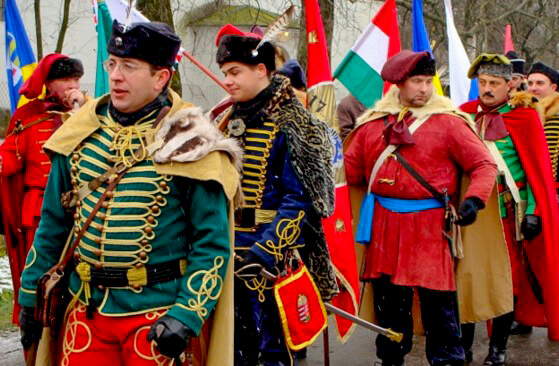
A significant number of Hungarians live in cities (Uzhgorod, Mukachevo, Coastal, Vinogradov, Khust, Tiachiv, Rakhiv) and in urban-type settlements (Solotvina, Barkasi, Kobylets’ka Polyana).However, most Hungarians are rural residents. The center of their settlement is Beregovsky district. Also a lot of Hungarians live in villages Uzhgorod, Mukachevsky and Vinogradovsky areas’. There are also mixed villages in Transcarpathia, where Hungarians live compactly next to Ukrainians and other peoples. Such, for example, are the village of Rakoshino in mukachevsky district, a settlement Vyshkovo Khust district, S. Tekovo Vinogradovsky district and a number of others. In addition to the above-mentioned areas, Hungarians live in many other villages of Transcarpathia, but they make up a small proportion of the population there.
Romanians– self-name “Romin”. The oldest Romanian villages in Ukraine were founded in the 13TH century by people from North-Western Wallachia and South Transylvania. In Transcarpathia, the Roman-speaking population is known from documents of the XIV century under the name “Volokhov”, and from the XIX century-Romanians.
Now Transcarpathian Romanians live in 9 localities Tyachevsky district – Solotvyno, Dibrova, Deep Stream, Topchyno, Poddar, Beskey, Carbunesti, Small Bouts and 4 villages of Rakhiv district, Bila Tserkva, Medium Water,Playuts’, Dobrik.
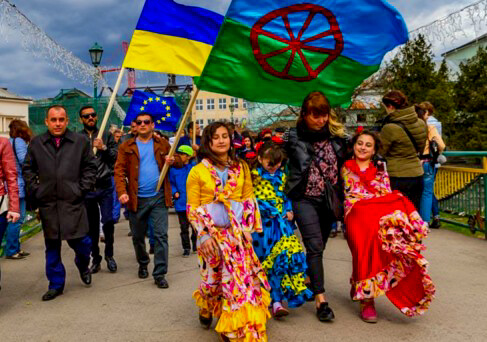
In 1975, 99.2% of Romanians lived in single-ethnic villages. Statistical data show a gradual quantitative growth of Romanians within the current Transcarpathia. If in 1921 there were only 11867 people, in 1930 their number was 12777, in 1959 – 18346, in 1970 – 23454, in 1979 – 27155, and in 1989 – already 29845. The quantitative growth of Romanians is purely natural. There was no influx of the Romanov population, with the exception of isolated cases of arrival of specialists from Moldova and Bukovina. This, in particular, is evidenced by statistics on the ethnic Romanian village of Sredni Vodiane. In 1948, the village had only 600 inhabitants, and in 1989, the village already had 6,163 inhabitants. Over 40 years, the population of the village has grown 10 times.
Despite the multi-ethnic and ethnographically diverse composition of the population in Transcarpathia, there are no inter-ethnic or inter-religious contradictions and conflicts, people are mostly hardworking and peaceful. It is wonderful people and beautiful naturethey are the main riches of Transcarpathia.




